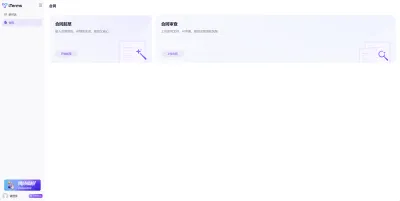🌈 Why Latitude?
Latitude lets you create API endpoints on top of your database/warehouse using just SQL, and embed interactive visualizations natively in your favorite frontend framework or through an iframe.
It's fast to get started, easy to maintain, and scales with your data.
<img alt="latitude-stack" src="https://github.com/latitude-dev/latitude/assets/5465249/cc650dc8-d974-43ea-b95c-41c48fa53c67">✨ Features
-
☁️ Connect to any database or data warehouse
-
📊 Easily compose parameterized SQL queries and expose them as API endpoints
-
📦 Built-in cache layer for lightning-fast query performance
-
🛠 Integrations with all common frontend frameworks (React, Svelte, Vue, VanilaJS)
-
🎨 Optional layout engine to build standalone dashboards using Svelte and Tailwind
-
🖥️ Support for embedding dashboards via iframe
-
🌎 Deploy with a single command
latitude deploy -
🔒 SSL-ready, encrypted parameters in url and parameterized queries to protect against SQL injection attacks
-
👥 Open-source driven by the community
💫 Examples
You can find sample projects using Latitude in action in the examples directory.
📚 Table Of Contents
⚡ Quick start
Here’s a quick getting started guide to get the sample app up and running:
1. Install Latitude
Run the following command to install the Latitude CLI globally on your machine:
npm install -g @latitude-data/cli
Note that if you're using Windows, you might need to follow these instructions first: Windows setup.
2. Create the starter project
Run this command to create a new Latitude project:
latitude start
The CLI will ask you the project name. Once you’re done, you’ll have a new directory with a sample app that you can run and customize.
3. Navigate to the project and run the app
cd my-new-app
latitude dev
This will start the development server and open the sample app in your browser.
🔗 Connect to your data sources
Set up the connection to your database or data warehouse through a simple configuration file.
type: postgres details: database: db user: username password: •••••••••••••••• host: postgres.example.com port: 5432 schema: public ssl: true
We do not recommend to store your database credentials in the configuration file. Instead, you can use environment variables to store your credentials securely. Find out more about this in the documentation.
We support the following sources:
- Athena
- BigQuery
- Clickhouse
- Databricks
- DuckDB
- MS SQL
- MySQL
- PostgreSQL
- Redshift
- Snowflake
- SQLite
- Trino
Find out more about connecting to sources in the documentation.
🧑💻 Write your SQL queries
Latitude makes it easy to fetch data from your database and expose it via an API endpoint in JSON format so that it can be easily consumed by your frontend application.
You can use parameters in your SQL queries to filter data based on external inputs. For example, you can create a query that fetches movies released between two years:
/queries/titles.sql
select id, title, release_year, type, runtime, imdb_score from titles where release_year between { param('start_year') } and { param('end_year') }
Additionally, you can reference other queries in your SQL to create composable data pipelines. For example, this is a query that uses the results of the previous one to display the count of titles released each year:
/queries/titles-agg.sql
select release_year, count(*) as total_titles, from { ref('titles') } group by 1 order by 1 asc
Automatic API endpoints
Latitude will automatically expose these queries as API endpoints that you can fetch from your frontend application.
To use these endpoints with parameters, you can pass them in the URL. For example, to fetch movies released between 2000 and 2020, you can do:
curl http://localhost:3000/titles?start_year=2000&end_year=2020
⌨️ Native frontend integration
Integrate with your frontend
Use our React components to fetch data from your API and display it in your application.
npm install @latitude-data/react
Once the React package is installed in your project, add the LatitudeProvider:
import React from 'react'; import ReactDOM from 'react-dom/client'; import { LatitudeProvider } from '@latitude-data/react'; ReactDOM.createRoot(document.getElementById('root')!).render( <React.StrictMode> <LatitudeProvider apiConfig={{ host: 'https://localhost:3000' }} > <Example /> </LatitudeProvider> </React.StrictMode>, );
You can fetch data from your Latitude data server with the useQuery hook:
import { useQuery } from '@latitude-data/react'; import { useCallback } from 'react'; export default function Example() { const { data: movies, isFetching, compute } = useQuery({ queryPath: 'titles', params: { start_year: '2000', end_year: '2020', }, }); const caption = isFetching ? 'Loading movies...' : 'List of movies'; const refresh = useCallback(() => compute(), [compute]); return (2 <div className='p-4 flex flex-col gap-y-4'> <h1 className='text-4xl font-medium'>React Example with Latitude</h1> <Button onClick={refresh}>Refresh</Button> <Table> {!isFetching ? <MovieList movies={movies!} /> : <MovieListSkeleton />} <TableCaption>{caption}</TableCaption> </Table> </div> ); }
🖥️ Layout engine and iframe embedding
Use our layout engine
If you want to build standalone dashboards, you can use our layout engine to create a dashboard with multiple visualizations.
To do so, simply create an index.html file under the views directory with the following content:
/views/index.html
<View class='gap-8 p-8'> <Row> <Text.H2 class='font-bold'>Netflix titles released over time</Text.H2> </Row> <Row> <LineChart query='titles-agg' x='release_year' y='total_titles' /> </Row> <Row> <Table query='titles' /> </Row> </View>
This will create a dashboard with a line chart and a table displaying the data fetched from the titles and titles-agg queries.
This dashboard can be accessed by navigating to http://localhost:3000/.
To pass parameters to the queries, add them to the URL as query parameters. For example: http://localhost:3000/?start_year=2000&end_year=2020.
Another option is to use our <Input> component to create a form that allows users to input parameters. Find out more about this in the documentation.
Embedding a standalone dashboard
You can embed the dashboard in your application using an iframe. To do so, simply add the following code to your application:
<iframe src="http://localhost:3000/queries?start_year=2000&end_year=2020" width="100%" height="600" />
If you're using React, we released a React component that simplifies the process of embedding dashboards in your application. Check out the documentation to learn more.
🌍 Deploy
To deploy your Latitude project, run the following command:
latitude deploy
This will deploy your project to the Latitude cloud, and you will get a URL where your project is hosted.
If it's your first time deploying, make sure to log in or sign up to Latitude by running latitude login or latitude signup respectively.
You can also deploy your project to your own infrastructure. Find out more about this in the documentation.
👥 Community
The Latitude community can be found on Slack where you can ask questions, voice ideas, and share your projects with other people.
🤝 Contributing
Contributions to Latitude are welcome and highly appreciated.
If you are interested in contributing, please join us on our Slack community, open an issue, or contribute a pull request.
🔗 Links
编辑推荐精选


潮际好麦
AI赋能电商视觉革命,一站式智能商拍平台
潮际好麦深耕服装行业,是国内AI试衣效果最好的软件。使用先进AIGC能力为电商卖家批量提供优质的、低成本的商拍图。合作品牌有Shein、Lazada、安踏、百丽等65个国内外头部品牌,以及国内10万+淘宝、天猫、京东等主流平台的品牌商家,为卖家节省将近85%的出图成本,提升约3倍出图效率,让品牌能够快速上架。


iTerms
企业专属的AI法律顾问
iTerms是法大大集团旗下法律子品牌,基于最先进的大语言模型(LLM)、专业的法律知识库和强大的智能体架构,帮助企业扫清合规障碍,筑牢风控防线,成为您企业专属的AI法律顾问。


SimilarWeb流量提升
稳定高效的流量提升解决方案,助力品牌曝光
稳定高效的流量提升解决方案,助力品牌曝光


Sora2视频免费生成
最新版Sora2模型免费使用,一键生成无水印视频
最新版Sora2模型免费使用,一键生成无水印视频


Transly
实时语音翻译/同声传译工具
Transly是一个多场景的AI大语言模型驱动的同声传译、专业翻译助手,它拥有超精准的音频识别翻译能力,几乎零延迟的使用体验和支持多国语言可以让你带它走遍全球,无论你是留学生、商务人士、韩剧美剧爱好者,还是出国游玩、多国会议、跨国追星等等,都可以满足你所有需要同传的场景需求,线上线下通用,扫除语言障碍,让全世界的语言交流不再有国界。


讯飞绘文
选题、配图、成文,一站式创作,让内容运营更高效
讯飞绘文,一个AI集成平台,支持写作、选题、配图、排版和发布。高效生成适用于各类媒体的定制内容,加速品牌传播,�提升内容营销效果。


TRAE编程
AI辅助编程,代码自动修复
Trae是一种自适应的集成开发环境(IDE),通过自动化和多元协作改变开发流程。利用Trae,团队能够更快速、精确地编写和部署代码,从而提高编程效率和项目交付速度。Trae具备上下文感知和代码自动完成功能,是提升开发效率的理想工具。


商汤小浣熊
最强AI数据分析助手
小浣熊家族Raccoon,您的AI智能助手,致力于通过先进的人工智能技术,为用户提供高效、便捷的智能服务。无论是日常咨询还是专业问题解答,小浣熊都能以快速、准确的响应满足您的需求,让您的生活更加智能便捷。


imini AI
像人一样思考的AI智能体
imini 是一款超级AI智能体,能根据人类指令,自主思考、自主完成、并且交付结果的AI智能体。


Keevx
AI数字人视频创作平台
Keevx 一款开箱即用的AI数字人视频创作平台,广泛适用于电商广告、企业培训与社媒宣传,让全球企业与个人创作者无需拍摄剪辑,就能快速生成多语言、高质量的专业视频。
推荐工具精选
AI云服务特惠
懂AI专属折扣关注微信公众号
最新AI工具、AI资讯
独家AI资源、AI项目落地

微信扫一扫关注公众号




